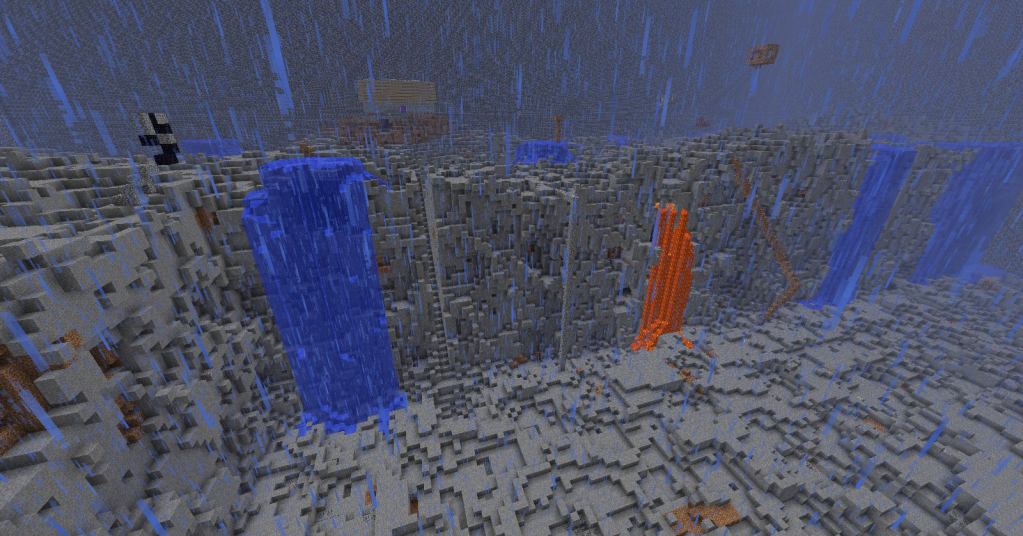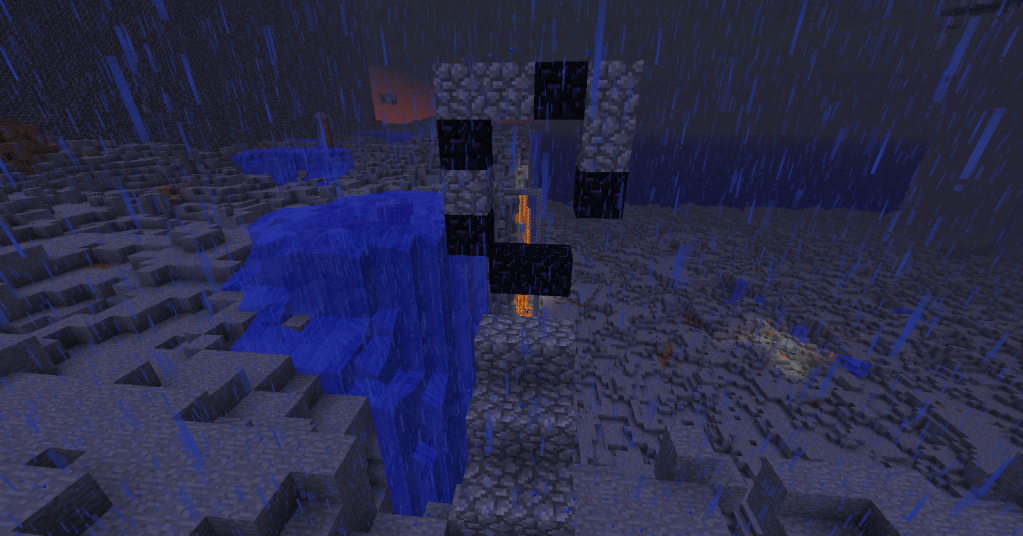But what if you imposed an artificial limitation of size and set 30 players loose on your world?
 |
| This |
That barren, post-apocalyptic pit is the result after 2 months of play.
For this experiment Wordworks applied a few rules to his server:
- World chat was discouraged (world chat, for those unfamiliar, is a text messaging system that allows everyone logged into a server to see the message), but 3rd party communications were encouraged to foster the forming of factions/guilds on the server.
- To ensure fair play the server was only available when all players were online to play.
- The space for the world was limited to a 350x350 (blocks) square of the world, blocked off by bedrock.
- The players were told “Never leave the bedrock walls”
- The players went in without any knowledge of what the experiment was about
Clay was gone within 3 days, and trees became scarce within a week, being one of Minecraft's main resources used for buildings and tools and generally being able to progress through the game.
Soon several factions formed and began interacting with each other.
- The Brotherhood
- The Merchant's Guild
- The Axe
- The Dwarves
- and a pair of players nicknamed the "Dick-ass Griefers"
 |
| The remains of the Nether Portal |
Soon strip mining for resources and all out warfare commenced between the groups, as resources began to dwindle, particularly by the exploits of the Dick-ass Griefers. Foretelling the inevitable, the pair built themselves a floating oasis of the one resource essential to survival, dirt with grass on it. Then they set themselves to systematically eliminating that resource from the map, as their supply of food was protected by a water ladder with a toggle switch, they could simply cut off contact with the rest of the world with a simple switch and be safe on their floating island of dirt.
Eventually, the other groups started banding together out of simple survival. The will to play had been lost by the 5th week, and Wordworks ended his post with a few simple questions and a statement:
The experiment was up before more testing could be done, but I ask you. If the walls were torn down one day and the players were free to the unlimited resources of Minecraft how would they react? Do you think they would work together and try to keep all the resources balanced or would they play the same way without regard for their environment or each other? Though in Minecrafts infinite world it would be impossible to destroy everything, do you think the disaster would slowly re-occur? I think this experiment has been a successful statement on the human condition and human interaction with the environment.The correlation he draws here is pretty easy to grasp, in a world with limited resources our nature, as humans, isn't to co-exist with each other or to be good stewards of our environment, but to attempt to profit, as The Merchant's Guild attempted, to isolate ourselves, as The Dwarves did, to take and hold what we can, as The Brotherhood did, or create chaos and anarchy as the Dick-ass Griefers did.
But in the end when simple survival is at risk, we can work together to achieve a common goal.
I think this experiment shows both some of the best and worst in humaninty. The best being our ingenuity and ability to come together for common goals, sometimes altruistically, and the worst being all the things previously mentioned above, our selfishness as a species.
What I also think this experiment proves is that gaming and games have evolved from simple interactive entertainment and even surpassed art as an interactive litmus test of human nature. Whatever the game the choices the players make are their own, even in those games that are linear in nature. FPS games can ask the player if they would shoot innocents in cold blood, as in the "No Russian" level of Call of Duty: Modern Warfare 2, and games like Minecraft can put a player in a myriad of different conflicts. Art can make you question and think, games can make you act.

No comments:
Post a Comment